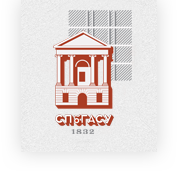A review of the Total Physical Response—a Foreign Language Teaching Methodology
DOI:
https://doi.org/10.63313/LLCS.9044Keywords:
Total Physical Response, Language teaching method, ReviewAbstract
The Total Physical Response (TPR) method, pioneered by psychologist James Asher in the 1960s, has revolutionized the way we approach language learning, especially for young learners. This innovative method focuses on integrating physical actions with linguistic input, fostering a natural and intuitive approach to language acquisition. In this thesis, the theoretical foundations and practical implications of TPR have been delved into, and some insights have been drawn from various scholars who have contributed significantly to its development and application.
References
[1] Adnan Oflaz.(2019).The foreign language anxiety in learning German and the effects of to-tal physical response method on students’ speaking skill. Language and Linguistic Stud-ies.(1):70-82.
[2] Asher, J. (1977). Learning another language through actions: The complete teacher’s guidebook. California: Sky Oaks Productions.
[3] Chen Xuanyi. (2013). The Application of Total Physical Response (TPR) Method in Chil-dren's Chinese Listening and Speaking Classes. (Doctoral Dissertation, Guangxi Uni-versity for Nationalities).
[4] Gao Ge, & Gao Lixin. (2013). The Application of Total Physical Response (TPR) Method in English Teaching. Journal of Liaoning Administration College of Police and Justice, (3), 2.
[5] Hu Tieqiu. (2000). TPR: A New Foreign Language Teaching Method Worth Promoting. China Science & Technology Translators Journal, (1), 33-34.
[6] Hue Nguyen.(2022).Attitudes of Elementary Students toward Teaching and Learning Eng-lish Vocabulary through Total Physical Response: A Case Study of Nguyen Khuyen Primary School.Journal of English Language Teaching and Applied Lin-guis-tics(3),46-55.
[7] Larsen-Freeman, D. (2000). Techniques and principles in language teaching. Oxford: Ox-ford University Press.
[8] Li Heng. (2012). A Review of Total Physical Response (TPR) Method. Science & Techno-lo-gy Information.
[9] Mo Linyan. (2008). A Brief Discussion on TPR Teaching Method. Neijiang Technology, 29(5), 2.
[10] Richards, J., & Rodgers, T. (1999). Approaches and methods in language teaching. Cam-bridge: Cambridge University Press
[11] Semarang. (2019).The Use of Total Physical Response (TPR) Activities for Teaching Lis-tening to Young Learners. English Language Teaching and Islamic Integration. (1):113-120.
[12] Sühendan Er. (2013).Using Total Physical Response Method in Early Childhood Foreign Language Teaching Environments. Procedia-Socialand Behavioral Sci-enc-es,(93):1766-1768.
[13] Tanaka, Y. . (1984). Some questions about asher's total physical response(paper read at shizuoka convention). 中国地区英語教育学会研究紀要, 93-97.
[14] Wang Chunfen. (2005). The Application of Total Physical Response Teaching Method in Junior High School English. Journal of Liupanshui Teachers College, (1), 4.
[15] Wang Li. (2008). The Application of TPR Teaching Method in Children's English Teaching. Journal of Heilongjiang College of Education, (1), 2.
[16] Wang Yiming. (2004). The Application of Total Physical Response Method in Primary School English Teaching. Journal of Basic English Education, School of Foreign Languages, Shandong Normal University, (4), 2.
[17] Wei Wei. (2014). A Study on Total Physical Response Teaching Method in Second Lan-guage Teaching Classroom. Journal of Tongling University, 13(4), 3.
[18] Zhang Qin. (2006). The Application of TPR Teaching Method in Children's English Teaching. Development, (10), 111-112.
[19] Zuo Nengzhengxue, & Xiong Xueliang. (1989). How to Incorporate Total Physical Response Method into English Teaching. Foreign Language Teaching Abroad, (1), 35-40.
Downloads
Published
Issue
Section
License
Copyright (c) 2025 by author(s) and Erytis Publishing Limited.

This work is licensed under a Creative Commons Attribution-ShareAlike 4.0 International License.















